MIT Climate & Energy Prize Cohort Info Book 2023






Sponsors




We would like to thank all our sponsors and partners for making this competition possible.










GIGAWATT
MEGAWATT


KILOWATT

Other Partners


2


MIT CEP Team 2023 6 2023 CEP Events 7 2023 MIT CEP Tracks & Stats 8 MIT CEP by the Numbers 10 Semifinalists by Region 12 2023 MIT CEP Semifinalist Cohort 14 Mentors & Judges 35 2023 MIT CEP Participants 37 Index 3



MIT CEP Team 2023

The MIT Climate and Energy Prize (CEP) is the world's largest and longest running competition for student-led climate start-ups. This year we are celebrating 16 years of climate impact. CEP brings together the best of MIT - innovation, tough-tech, disciplined entrepreneurship and an amazing sense of community to tackle the worlds hardest problems.

2023 was our most competitive year so far. We received a recordbreaking 118 applications! The teams who have made it this far demonstrated that their ideas have enormous potential to address climate change and are scalable with the right support at the right time. We are so proud to support these brave and committed founders on their journey.
We wish our qualifying teams all the best for the competition and for their next steps as climate entrepreneurs!

6
2023 CEP Events


Europe Semi-Final
Thursday, March 9, 2023
5:00 PM – 9:00 PM CET
STATION F
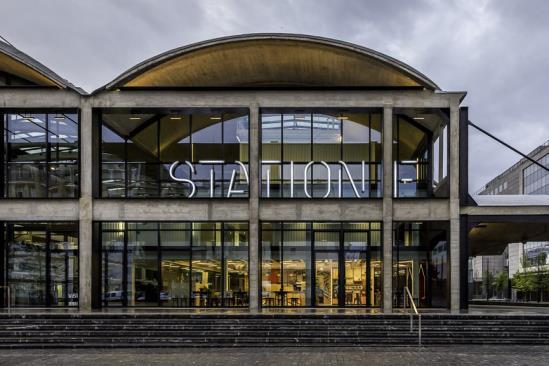
5 Parvis Alan Turing 75013 Paris France
US Semi-Final
Thursday, March 16, 2023
2:00 PM – 7:00 PM EST
Greentown Labs

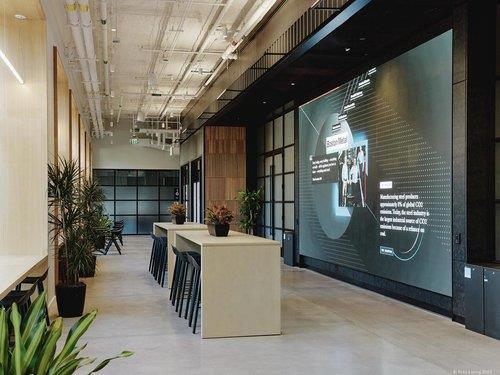
444 Somerville Avenue, Somerville, MA 02143
Grand Final
Thursday, April 13, 2023
10:00 AM – 4:00 PM EST
The Engine
750 Main Street, Cambridge, MA 02139
7
2023 MIT CEP Tracks & Stats
This year’s MIT Climate and Energy Prize features eight tracks for prospective teams.


ENERGY
New generation technologies (e.g., nuclear, solar, geothermal), energy storage, hydrogen and other low-carbon fuels, enabling renewables software, marketplace, and grid management platforms, DER and demand response tools, utility transmission and distribution services

FOOD AND LAND USE
Alternative proteins, regenerative farming, vertical farming, sustainable fertilizer and animal feed, nature restoration and ecosystem services, remote sensing for crop yield optimization, autonomous farming equipment, water tech, and food waste reduction

BUILT ENVIRONMENT
Sustainable building materials, low-carbon heating and cooling, prefab construction, energy efficiency, building electrification and energy optimization


TRANSPORTATION
Battery technologies, EV autos, EV charging and fleet management, electric micromobility and ridesharing, zero-emission planes, boats, and trains, urban public transport

CARBON REMOVAL
Carbon offset marketplace and procurement platforms, carbon utilization, carbon removal and storage technologies, point-source CCS, verifiers and ratings enablers
8
2023 MIT CEP Tracks & Stats

OCEAN CLIMATE SOLUTIONS
Ocean conservation, ocean pollution removal, biomass sinking, ocean alkalinity enhancement, direct ocean capture, ocean upwelling/fertilization, coastal blue carbon
INDUSTRIAL DECARBONIZATION
Low-carbon cement, chemical and plastics, steel, manufacturing, metals and mining, circular economy commerce, sustainable textiles and packaging, waste and recycling

CLIMATE MANAGEMENT
Emissions and sustainability reporting, ESG investing and fintech, earth observation through remote sensing, climate risk and intelligence platforms
Application Statistics by Tracks

Energy
Food & Land Use
Industrial Decarbonization

Climate Management
Built Environment
Carbon Removal
Transport
Ocean Climate Solutions

0% 5% 10% 15% 20% 25% 30%
9
MIT CEP by the Numbers






16th Annual Event
3.3M Prize Money Granted
260+ Companies Mentored
 1.7B Follow-on Funding
700+ Applications Received
1.7B Follow-on Funding
700+ Applications Received
10











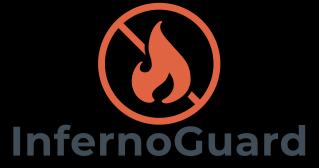








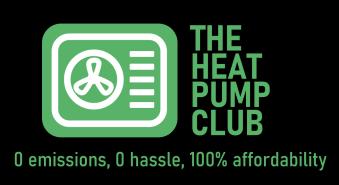
11 AquaTerra Innovation Carbon-Negative Products from Wastewater 15 Arbon Moisture-Swing Direct Air Capture 16 ArimaAran Sustainable Alternative for Peat 26 Atma Leather Upcycling Banana Crop Waste into Leather 17 Caravel Bio Cell-Free Systems for Sustainability 18 CLIP Energy Shrinking Bills with Smart Sensors & AI 27 Enersoul Sand Based Heat Storage 28 Flux XII Organic Flow Battery Grid Energy Storage 19 Helix Earth Technologies Dehumidifiers to Save >50% AC Energy Use 20 InfernoGuard Enabling Insights for Wildfire Readiness 21 Ki Hydrogen Solving Green Hydrogen’s Energy Problem 29 MIMBIOSIS From Waste to Mycelium Biomaterials 30 ParaStruct We Make Construction Circular 31 PolyoseBio Producing Chemicals from Food Waste 22 PRONOE CO2 Removal (CDR) via Ocean Enhancement 32 SimonCycle True Plastic Circularity. Zero Carbon. 24 Seia Bio Protecting Microbes to Protect Plants 23 Synergy Generating Energy From Your Journey 33 The Heat Pump Club Heat Pumps ‘The Easy Way’ 34 Finalists SemiFinalists US Participants EU Participants
Semifinalists by Region

This year, MIT Climate and Energy Prize received 118 applications from all around the world, and selected 18 teams as semifinalists.
For the first time in MIT CEP’s 16competition and received applications











Wisconsin
Illinois Texas
Massachusetts
Connecticut
12
-year history, we expanded the applications from outside the US











Kingdom
13
United
Germany Austria France India
North America

lclarke@mit.edu
AquaTerra Innovation (ATI)

Boston, MA, USA
Carbon Removal
Food & Land Use
Carbon-Negative Products from Wastewater
Milestones:
Business Concept
Prototype/MVP Built
Company Incorporated
First External Users/Pilot
First Paying Client(s)
Funding Raised
Team:
Stephen Tainter, Cofounder, CEO
 Lauren Clarke, Cofounder, CTO
Lauren Clarke, Cofounder, CTO

✓
THE PROBLEM
Large volumes of industrial wastewater are generated each year, where the majority is disposed of with minimal treatment. An example is the oil & gas industry in the Permian, which generates 600 million gal/day of wastewater and injects it underground. Not only has this led to significant environmental impacts, but it is a missed opportunity for extracting value from this component-rich brine.
THE SOLUTION
At ATI, we are rethinking how we handle these salty waste streams by building a system to not only extract dissolved salt/minerals to clean the water, but also generate valuable chemicals. We’ve developed a process capable of simultaneously treating the water and generating sodium hydroxide, which we use to capture and store carbon dioxide as carbonates. Our solution not only generates a clean and reusable water stream, but also creates carbon-negative industrial commodities.
VALUE PROPOSITON
• We reduce wastewater disposal in the Permian up to 25%, reducing the environmental impact and generating a new source of clean water

• We generate carbon credits, which can be traded with carbon-intensive industries to account for their direct emissions
• We offer companies carbon-negative chemicals which can be used to meet their scope 3 emissions goals

15
arboncapture@gmail.com www.arboncapture.com
Arbon
Boston, MA, USA
Carbon Removal
Moisture-Swing Direct Air Capture
THE PROBLEM
Business Concept
Milestones: ✓ ✓
Prototype/MVP Built
Company Incorporated


First External Users/Pilot
First Paying Client(s)
Funding Raised
Team:
Xiangkun
Climate change needs translational engineering solutions to address the excess CO2 that has already been dumped into the atmosphere. However, the acceptance of such technologies of Direct Air Capture (DAC) of CO2 still needs to be improved due to the cost and technical difficulty of solving this problem. Innovative air capture designs require systems thinking, process design, material science, techno-economic, and life cycle analysis.
THE SOLUTION
Xiaoyang Shi, CEO


Arbon has developed a reusable material to capture CO2 directly from the air in a dry condition and release CO2 when wet. Arbon’s core technology on moisture swing adsorption only uses water in the process. Our sorbent has exhibited remarkable stability and does not degrade after 10,000 cycles. It has a high energy efficiency without consuming heat during regeneration, which is considered the most significant bottleneck for the high energy cost of traditional direct air capture technologies. Our co-founder won Corning Advanced Materials Prize in 2022 based on the new technology of oxide materials for direct air capture.

VALUE PROPOSITON
• High selectivity (it only captures CO2, not H2O from the air)
• High stability (it can capture and run 10,000 cycles without degradation)
• Low energy cost (1/3 energy cost compared to traditional amine and 1/6 compared to strong alkaline
 (Elvis) Cao, CTO
(Elvis) Cao, CTO
16 Finalist
India & New Haven, CT, USA
Carbon Removal

Food & Land Use
contact@atmaleather.com
https://banofileather.com/

Jinali Mody, Founder CEO
Sonam Gupta, Business Development Lead



Nidhi Patel, Strategy Lead


KyleRichmond-Crosset, Environmental Assessment& Communications



Shashank Shrivastava, R&D Head

Sulata Paul, Leather Technician
Climate Management
Upcycling Banana Crop Waste into Leather
THE PROBLEM
The pollution and animal cruelty of the leather industry, as well as the growing issue of crop waste.
1 - The leather industry is responsible for significant environmental damage and puts immense pressure on land, food, and water resources. 1 cow leather bag = 10K liters of water + CO2 equivalent of charging 18K phones. 90% of leather is tanned using toxic chemicals deposited untreated into wastewater.
2 - 80% of the banana plant is wasted every harvest which is 120 Mn tonnes of waste.
THE SOLUTION
Atma Leather is disrupting the leather industry by making Banofi (banana fibre leather) a vegan plant-based leather from discarded banana pseudostems. Banofi Leather results in a 95% reduction in water used, 90% reduction of carbon emission and 100% reduction in toxic waste compared to animal leather. This novel production process also generates additional income for farmers. We are a B2B enterprise with a current fashion focus for Banofi but we see potential across automotive, furniture and others. Individuals are now aware of the harmful impacts of the fashion industry thus an alternative like Banofi Leather, helps brands move away toward sustainable alternatives.

VALUE PROPOSITON
• Banofi Leather provides a sustainable and cruelty-free alternative to animal leather.
• Brands can demonstrate their environmental and animal welfare commitment using Banofi , which offers similar performance to animal leather.
• Brands can reduce CO2 emissions and water usage by up to 90% and 95% respectively, while supporting smallholder farmers and showcasing their commitment to social impact.
17
Atma Leather
Team: Business Concept Prototype/MVP Built Company Incorporated First External Users/Pilot First Paying Client(s) Funding Raised Milestones: ✓ ✓ ✓ ✓ ✓
Finalist
Caravel Bio
Cell-Free Systems for Sustainability

THE PROBLEM
The bioeconomy has great potential to reduce our reliance on petrochemicals, but it faces a scalability challenge. Many companies have tried to scale fermentation for sustainable chemical production. But fermentation often falls short because of low-yields, product toxicity constraints, and costs that far exceed that of petroleum products. Without a scalable solution to address these issues, the bioeconomy will not be able to effectively mitigate the impact of climate change.
THE SOLUTION
Caravel is developing a cost-effective, cell-free technology platform to produce products in areas where fermentation falls short. We use enzymes – just like in fermentation – to quickly catalyze specific chemical transformations. But we only use enzymes, not the whole living cells that cause fermentation’s problems. The cost of enzyme production is often too high to use cell-free systems at scale, but we have developed a technology to lower the cost of enzyme production and stabilization. Our enzymes cost less and last longer, which enables us to save money and create products that can compete with their petroleum-based counterparts.

VALUE PROPOSITON
• We use fundamentally different biology to reimagine all of sustainable chemical production, enabling a 60% reduction in predicted costs.


• Our cell-free system can create sustainable products that fermentation can’t.
• We take two disparate fields – enzyme engineering and enzyme immobilization – and combine them into a single high-throughput platform using synthetic biology.


Somerville, MA, USA Team: Carbon Removal Industrial Decarbonization Energy
Emily Weinberg, President & COO
18 Business Concept Prototype/MVP Built Company Incorporated First External Users/Pilot First Paying Client(s) Funding Raised Milestones: ✓ ✓ ✓ emily@caravel.bio caravel.bio
Trevor Nicks, CEO
patrick.sullivan@flux12.co mwww.flux12.com
Milestones:
Business Concept
Prototype/MVP Built
Company Incorporated
First External Users/Pilot
First Paying Client(s)
Funding Raised
Team:
Flux XII

Madison, WI, USA

Energy
Climate Management
Organic Flow Battery Grid Energy Storage
THE PROBLEM
Patrick Sullivan, CEO
 Dawei Feng, Scientific Advisor
Dawei Feng, Scientific Advisor

✓ ✓
✓
For an economical and reliable clean energy transition, utilities need grid long-duration energy storage (LDES). Lithium-ion battery is problematic for grid application with fire safety, supply chain, and short duration limitations. Yet, no current LDES technology can compete with its performance, scalability, and cost-effectiveness. Specifically, commercial flow batteries utilize inorganic active materials with energy efficiency, area footprint, and device engineering drawbacks.
THE SOLUTION
Flux XII has developed a long-duration flow battery technology that utilizes organic salts dissolved in benign water to store energy. The device design mitigates fire risk and permits adaptability to any duration. The patented organic active materials have showcased record overall energy density, energy efficiency, and stability performance for flow batteries on the lab-scale and is being validated in 1 kW prototype device. The organics have also been scaled in 1-ton industrial reactions using low-cost precursors, green synthetic methods, and high-yield reactions. The Flux XII flow battery will be the ultimate grid energy storage device adaptable to utilities’ needs.
VALUE PROPOSITON
• Safe – non-flammable and non-corrosive pH neutral water electrolyte, permitting low-cost and robust device components
• Area footprint – about 3x the energy density of commercial flow batteries and complete decoupling of power (kW) and capacity (kWh) components
• Energy efficiency – over 80% round-trip DC efficiency at rated power and over 90% when operating below rated power

19
rawand@helixearthtech.com
helixearthtech.com
Helix Earth Technologies


Houston, TX, USA
Carbon Removal Energy Climate Management
Dehumidifiers to Save >50% AC Energy Use
THE PROBLEM
Business Concept
Prototype/MVP Built
Company Incorporated
First External Users/Pilot
First Paying Client(s)
Funding Raised

Team:
✓
Milestones: ✓ ✓
Humidity in air causes substantial parasitic latent loads on air conditioning (AC) systems, increasing their energy use by up to 80%. Lowering these humidity levels in air can substantially reduce energetic loads on AC systems by up to 70%, but unfortunately existing technologies are either (i) too inefficient or slow in their dehumidification rates, (ii) are too bulky for existing AC infrastructure, or (iii) are too unreliable for practical use.
THE SOLUTION
Rawand Rasheed, CEO & Co-founder
 Brad Husick, President & Co-founder
Brad Husick, President & Co-founder

 Dr. Daniel Preston, Advisor
Dr. Daniel Preston, Advisor
 Dr. Nenad Miljkovic, Adviser
Dr. Nenad Miljkovic, Adviser
We are developing retrofit dehumidification systems designed to reduce AC energy use by more than 50%. Our dehumidification system is enabled by an unprecedented droplet capture filter called Helix MICRA™, which was originally developed in collaboration with NASA for space. Helix MICRA™ uses proprietary surface topology in a 3D printed filter that enables high-rate, high-efficiency dehumidification by enabling high-surface area contact between liquids and gasses. Our drop-in dehumidifiers work with existing AC infrastructure to enable >50% energy and cost savings. At scale adoption of our dehumidifiers can reduce global emissions by >600 Mt CO2/yr while saving the industry >$100 billion/yr.
VALUE PROPOSITON
• Offering retrofit dehumidifiers to commercial real estate owners to save >50% of AC energy use and operating cost.
• Our dehumidifiers are 6-8x more efficient than other technologies, which enables drop-in solutions that increase efficiency in existing AC infrastructure.
• Low manufacturing costs allow us to deliver cost-effective solutions to help customers reduce environmental impact and cost.

20
nandita.balaji1@gmail.com
infernoguardusa.com


InfernoGuard
Chicago, IL, USA
Climate Management

Enabling Insights for Wildfire Readiness

THE PROBLEM
InfernoGuard is empowering landowners to make better decisions preparing for wildfire season to eradicate the megafire crisis. We enable data-driven insights into wildfire risk assessment and mitigation strategy, ultimately taking the guesswork out of wildfire preparedness and addressing wildfires before they begin.
THE SOLUTION
Team:
Nandita Balaji, CoFounder & COO
 Kevin Kaspar, CoFounder & CEO
Kevin Kaspar, CoFounder & CEO
 Zoe Sherman, CoFounder & CTO
Zoe Sherman, CoFounder & CTO

InfernoGuard helps landowners understand wildfire risk unique to their property through precision risk-mapping software. Through this, we analyze 11+ factors relevant to wildfire risk to create a color-coded map with precision down to the 10th of an acre. Through partnerships with leaders in the mitigation and hardware-detection spaces, we'll integrate our solution into the wildfire response process to bring our solution to the landowners who need it most.
VALUE PROPOSITON
• InfernoGuard connects the currently fragmented process of wildfire detection by integrating precision wildfire risk mapping into the space.
• Our software informs landowners of risk unique to their property, turns these insights into actionable mitigation plans, enables detection companies to effectively deploy products in high risk areas, and helps firefighters innovate their response efforts.

21
Company
First
Funding Raised Milestones: ✓ ✓ ✓ ✓ ✓
Business Concept Prototype/MVP Built
Incorporated First External Users/Pilot
Paying Client(s)
mkrause@mba2023.hbs.edu

polyosebio.com

Milestones:
Business Concept
Prototype/MVP Built
Company Incorporated

First External Users/Pilot
First Paying Client(s)
Funding Raised
Team:
PolyoseBio
Boston, MA, USA
Food & Land Use
Industrial Decarbonization

Producing Chemicals from Food Waste
THE PROBLEM
Makari Krause, Cofounder

 Amin Espah Borujeni, Co-founder
Amin Espah Borujeni, Co-founder
✓ ✓
Every year in the U.S. around 40% of the food we produce is wasted (~100 million tons). This food waste contributes about 5% of US greenhouse gas emissions. Much of this is emitted as methane gas when food waste decomposes in landfills. We aim to divert food waste away from landfills and convert it into high-value sugar polymers. Simultaneously we plan to revolutionize the $100B sugar polymer production industry, which currently relies on outdated and unsustainable production methods.
THE SOLUTION
We aim to divert food waste away from landfills and to productive use by upcycling it into high value sugar polymers using a combination of insects and microbial cell factories. The process starts by using food waste to grow our purposeselected insects. The insects are then dried, crushed, and used as the raw material for microbial growth. Our proprietary engineered microbes convert the insect-based growth medium to sugar polymers which we purify and sell on global commodity markets. In addition to diverting food waste away from landfills, our technology displaces existing sugar polymer production methods, which are unsustainable and produce 30x more carbon emissions than our new process.
VALUE PROPOSITON
• We offer a productive, sustainable, and scalable alternative to landfilling food waste to municipalities and food waste generators around the world.
• We offer low-cost sugar polymers to a multitude of global industries (e.g., cosmetics, food & beverage, medical, etc.)
• We offer carbon-negative sugar polymers to a multitude of global industries (e.g., cosmetics, food & beverage, medical, etc.)
22
Tim Mui

Seia Bio

Cambridge, MA, USA
Carbon Removal Climate Management
Food & Land Use
Protecting Microbes to Protect Plants

THE PROBLEM
Chemical fertilizers support food production for half of the global population. Yet their production causes a significant portion of greenhouse gas emissions, and their use destroys native soil microbiomes. Many have therefore worked to develop microbial fertilizers to circumvent these issues, but the microbes needed are delicate and difficult to manufacture.
THE SOLUTION
A self-assembling coating that protects microbes from processing and storage stresses. The coatings protect microbes from freeze-drying stress, anaerobes from oxygen exposure and temperature-sensitive strains from high-temperature storage.
VALUE PROPOSITON
Ariel Furst
Ben Burke

Seia Bio's enables the widespread use of beneficial microbes through:

• Improved production consistency
• 1000x increased viability
• 10x extension of shelf life
• enabling ambient temperature storage

23
Team: Business Concept Prototype/MVP Built Company Incorporated First External Users/Pilot First Paying Client(s) Funding Raised Milestones: ✓ ✓ info@seiabio.com www.seiabio.com ✓ ✓
Finalist
jgr@mit.edu

SimonCycle
Boston, MA, USA
Industrial Decarbonization


Waste Management
True Plastic Circularity. Zero Carbon.
THE PROBLEM
Business Concept
Milestones: ✓ ✓
Prototype/MVP Built
Company Incorporated

First External Users/Pilot
First Paying Client(s)

Funding Raised
Team:
Stwart Pena Feliz, CEO
Today, 4.5% of all global CO2 emissions can be associated with the plastic lifecycle. At the moment, the recycling industry is unable to resolve this crisis as current recycling options either downgrade the quality of the plastics or end up emitting more CO2 emissions in the process of recycling. What the world needs is a technology that is able to upcycle plastic of any quality at much greater energy efficiency.
THE SOLUTION
Our plastic upcycling technology is based on thermodynamic ring-chain equilibria, which avoids the full breakdown of the waste plastic. Instead of breaking every single bond in the functional backbone polymer chain, our technology makes use of the fact that polymer chains can be turned into cyclic oligomers through a catalyzed transesterification under reactive distillation, which can easily be separated and re-polymerized to high polymer chain length through ring-opening polymerization, to produce plastics indistinguishable from fossilfuel derived ones. This process operates at significantly lower temperatures, which allows the process to be electrifiable to reach net-zero emissions.
VALUE PROPOSITON
• SimonCycle is able to upcycle PET plastic of any quality to virgin-grade quality, ready for use in all applications.

• SimonCycle’s process requires <80% of the energy compared to virgin plastic production processes and other advanced recycling solutions, resulting in lower OPEX cost.
• SimonCycle requires less capex than other advanced recycling solutions, resulting in a faster payback rate.
24
Finalist
Dr. Jan-Georg Rosenboom, CTO
Europe

abraham.deepthi@gmail.com



Milestones:
Business Concept
ArimaAran


Tamil Nadu, India
Carbon Removal
Industrial Decarbonization

Sustainable Alternate for Peat
THE PROBLEM
#1: Seeking responsibly sourced alternatives to peat in commercial horticulture to safeguard UK food security due to impending peat bans. Peat extraction emits 0.25T C/ m3
#2: About 70% of 64 million tonnes of banana plant waste produced annually in India is being wasted. Without proper plant waste management, 7.08GT of carbon is emitted yearly, and precious commodities are left untapped, creating serious ecological damage.
THE SOLUTION
Our solution has two parts:
Team:
Bharathi V, PhD, R&D Team Lead


Keerthivasan N, PhD, R&D Head
Vijayprakash M, PhD, R&D Head

Deepthi Abraham, Head, Business Development

Manoj M, Head, Supply Chain Management

Leo Prakash, Team Mentor
#1: One is the patented eco-positive technology that can convert banana pseudostem into a plant-growing media, Banana Peat. It has the performance potential to replace peat on a 1:1 basis and has a water retention capacity that rivals coco pith. It is responsibly sourced, shows consistency in parameters, possesses excellent growth medium characteristics and its potential to scale supply globally is high.
#2: Second is the patentable customized machinery that makes the process more efficient and financially viable.
Its creation also impacts the triple bottom line – People, Planet and Profit.
VALUE PROPOSITON
• Made from virgin banana plant material, this patented carbon-negative growing medium has consistent parameters that enable agribusinesses to precisely control their horticultural environmental conditions. Farmgate processing makes it contamination and pathogen free.
• Having a responsibly sourced perennial supply and excellent water retention, it is a reliable choice for horticulture.
26
Prototype/MVP Built Company Incorporated
First External Users/Pilot First Paying Client(s) Funding Raised
✓
✓ ✓
hello@clipenergy.co.uk

Milestones:
Business Concept
Prototype/MVP Built
Company Incorporated
First External Users/Pilot
First Paying Client(s)
Funding Raised
Team:
Anna Soligo, CEO

✓ ✓
Built Environment Energy Climate Management

Shrinking Bills with Smart Sensors & AI
THE PROBLEM
We're facing a cost-of-living crisis. In the UK, disposable income is falling at the highest rate we've ever seen, leaving people struggling to pay their bills. Many are trying to reduce energyconsumption to save money, but they're doing this blindly: they don't know where their energy is going, or what changes would actually be effective. At best, this has a minimal impact, but at worst it drastically impacts individuals' quality-of-life.
THE SOLUTION
Joseph Folkes, COO

Freya Smith, CCO

Chris Kalogroulis, CTO

Michaela Barker, CFO

CLIP is a self-installable device which tells you how much electricity your individual appliances are using. Users simply CLIP our sensor into their fusebox and install the app. Behind the scenes, we process their household power-signal to extract the consumption of different devices and identify impactful steps individuals can take to reduce it. By tailoring insights to personal habits, we ensure they are helpful and easilyactionable. Studies have validated that appliance breakdowns of energy-use alone can reduce consumption by 10-20%. So, we estimate CLIP could reduce the UK’s electricity-use by 13 terawatt-hours/year: equivalent to the energy-production of 2500 wind-turbines.
VALUE PROPOSITON
• CLIP provides households with appliance specific data on their electricity use.

• Alongside this, we generate personalised, data-driven advice, which enables users to take simple and effective steps to reduce their consumption, without trial and error.
• We offer this as an affordable subscription, based around a self-installable device, because we want CLIP to be accessible to a wide-range of users.
27
CLIP Energy London, UK
www.clipenergy.co.uk
Enersoul

Baden-Württemberg, Germany
Carbon Removal
Energy
contactenersoul@gmail.com

Milestones: ✓
Business Concept
Prototype/MVP Built
Company Incorporated
First External Users/Pilot
First Paying Client(s)

Funding Raised
Team:
Rajkaushik Borgohain, CEO
Achraf Bechara, COO

Alex Berezhnoy, CTO

Yusuf Gürkan, CFO and Product Manager


José Malho, Chief Project and Business Development Officer
Jeremy Sintong, Head of R&D


Industrial Decarbonization
Sand Based Heat Storage
THE PROBLEM
Firstly, the problem lies in the energy intermittence mainly occurring seasonally wherein there is excess energy in a frame of time and on the other it's not enough to match the supply and demand.

Secondly, the excess industrial waste heat highlights high primary energy intake causing greenhouse gas production from waste heat owners who are distant from the Heat utility companies amidst provoking quality mismatch and locational challenges.
THE SOLUTION
Sand from construction sites cumulated in a vessel to store heat through fumes from Industrial Waste Heat owners and connect it to the District Heating Grid amid utilising the surplus of renewable electricity to be stored as heat via resistive heating. The discharging and supply of heat process takes place with an inbuilt stratifying fluid exchanger. In this way,
- Sand's thermo-physical properties attain long term storage would ensure the supply and demand matching.
- Multiple product front would enable locational issues to be resolved via penetrating the District Heating networks.

- Modularity of sand based heat technology could address the quality mismatch.
VALUE PROPOSITON
• Cost Effective Sand based Heat Storage cum exchanger technology for long term duration storage and high charging and discharging cycle ability.
• Excess Renewable electricity stored as Heat from the electricity grid.
• Industrial Plant efficacy achievement with looping of waste heat via compressor feed to attain spot cooling.
28
Finalist
koji@ki-hydrogen.com

https://ki-hydrogen.com/
Milestones: ✓
Business Concept

Prototype/MVP Built
Company Incorporated
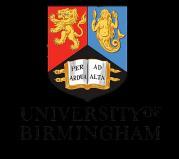
First External Users/Pilot
First Paying Client(s)
Funding Raised
Team:
London, UK
Energy
Industrial Decarbonization
Food & Land Use
Solving Green Hydrogen’s Energy Problem



THE PROBLEM
Today’s green hydrogen (derived from water electrolysis) is not cost-competitive with grey hydrogen (derived from fossil fuels) because it is too energy intensive to produce, with energy accounting for 60-70% of the levelised cost of green hydrogen. As a result, 99.3% of the 94 million tonnes of hydrogen produced annually is still from fossil fuels, contributing to over 830 million tonnes of direct CO2e emissions.
THE SOLUTION
Ki Hydrogen is a deep-tech climate venture using biomass electrolysis to reduce the energy required to produce green hydrogen by 75%. Biomass electrolysis uses much less renewable electricity to generate hydrogen from an aqueous biomass waste stream, compared with the energy-intensive process of splitting water through electrolysis. The only gaseous product is pure hydrogen while the liquid feedstock can be broken down into useful organic chemicals such as acetic and formic acids. Ki Hydrogen is building on our CTO’s research experience with waste-to-hydrogen systems at the University of Cambridge to commercialise this innovative technology and accelerate industrial decarbonisation.
VALUE PROPOSITON
• 75% energy reduction for green hydrogen generation, far below what is even theoretically possible through water electrolysis.
• Hydrogen is the only gaseous product. No gas separation or carbon capture required.
• Compatible with intermittent renewable electricity supply and standard alkaline electrolysers. No rare-earth metals required.

Ki Hydrogen
Carl Banbury, COO
Koji Muto, CEO
29 ✓ ✓ Finalist
Michael Stanton, CTO
tiago.morelli@mimbiosis.com mimbiosis.com
MIMBIOSIS

Munich, Germany
Built Environment
Industrial Decarbonization
From Waste to Mycelium Biomaterials
THE PROBLEM
Business Concept
Milestones: ✓ ✓
Prototype/MVP Built
Company Incorporated

First External Users/Pilot
First Paying Client(s)
Funding Raised
Team:
Gokce Aydan Isik, Product Development


Almira Selin Kahya, Business Development and Operations
Tiago Taubald Morelli, Finance and Strategy

MIMBIOSIS targets two main sources of environmental pollution: textile and plastic waste. 20% of all global industrial waste comes from the textile industry, which is usually made up of textile fibers and toxic chemicals released into the environment. Plastic foams, on the other hand, contribute to the dependency of fossil fuels and are filling 30% of the world's landfills, taking up to 500 years to decompose and killing biodiversity.
THE SOLUTION
We grow carbon negative, 100% biodegradable biomaterials from textile waste using mycelium, the roots of the fungi. Due to high technical and sustainable quality, our products can substitute plastic foams used in packaging, construction and automotive industries, enabling them to comply with EU regulations. As our beachhead market, we first produce protective packaging for the household appliances industry. MIMBIOSIS reintroduces the waste that would otherwise end up in landfills/water bodies to the economy in the form of a plastic substituting biomaterial. At the end of the lifecycle of industrial implementations, our products biodegrades in soil only in 2 months.
VALUE PROPOSITON
• Generating positive environmental impact by connecting industries: per 1m³biomaterial, 100kg textile waste recycled, 80kg CO2 avoided, 20kg CO2 captured
• Facilitating textile industry with waste management and cost saving of $5bn globally

• Providing superior impact resistance for the home appliances manufacturers thus reducing damage costs by 30% and carbon taxes by 240%, saving $500mn globally

30 Finalist
Breitenberger@parastruct.com
www.parastruct.org
ParaStruct

Innsbruck, Austria
Built Environment
Industrial Decarbonization

We Make Construction Circular
THE PROBLEM
Business Concept
Prototype/MVP Built
Company Incorporated
First External Users/Pilot
First Paying Client(s)
Funding Raised
Team:
✓
Milestones: ✓ ✓ ✓
The construction industry is one of the biggest emitters of CO2 and one of the biggest waste producers. The consumption of building materials will double due to population growth. There is no recycling of many fine-grained materials, about 30% of the total waste. These materials end up in landfills, causing land consumption and harming biodiversity. Biodiversity has already exceeded its planetary limits.
THE SOLUTION
Georg Breitenberger, Founder
Dr. Freia Ruegenberg, Chief Scientific Officer

 Kilian Rießbeck, Circular Development Engineer
Kilian Rießbeck, Circular Development Engineer


 Dr. Gregor Metzler
Dr. Gregor Metzler
We have developed a high-speed 3D powder printing process to process fine-grained particle materials. The mineral lowcarbon binder we have developed has two superpowers: It binds all fine-grained organic and inorganic materials particularly well and is recyclable. That enables us to produce high-quality components from materials that would typically be landfilled. That allows us to give high value to waste as 3D printing powder. However, we can use our materials in conventional construction. Our impact is material savings of 5060% through 3D printing. Our binder technology reduces CO2 emissions by 40% compared to cement, and we prevent land consumption.
VALUE PROPOSITON
• Our clients achieve their sustainability goals and at the same time get one of the most profitable and stable business models, "Cash the Trash".
31
hello@pronoe.earth

http://pronoe.earth/
Milestones:
Business Concept
Prototype/MVP Built

Company Incorporated
First External Users/Pilot
First Paying Client(s)
Funding Raised
Team:
PRONOE
Paris, France
Carbon Removal
Industrial Decarbonization

Ocean Climate Solution
CO2 Removal (CDR) via Ocean Enhancement
THE PROBLEM
✓ ✓
On top of drastic emissions reduction, ecosystem restoration and CO2 removal are necessary to reach NetZero goals. A forecasted 6-16GtCO2 need to be removed each year by 2050. However, the current removal capacity is almost nonexistent and expensive to customers. The ocean is the largest carbon sink yet it is rapidly acidifying as a result. Ocean acidification decreases its capacity for further CO2 uptake and threatens ecosystems and communities.
THE SOLUTION
We restore the ocean’s natural ability to capture and permanently store CO2 from the air. We develop industrial systems that turn industrial effluents into an alkaline flow, which is monitored and safely dispersed. Alkalinity is the opposite of acidity, the alkaline flow locally reverses the acidification of surface waters with associated environmental co-benefits, and enables the issuance of high-quality carbon removal certificates. Focused on profitable carbon removal only, our process entails no waste generation. Our automated systems seamlessly integrate with existing coastal industries, operate under current regulations and leverage on legacy infrastructures.
VALUE PROPOSITON
• A reliable supply of high-quality removal carbone removal certificates (CDR-As-A-Service). Our certificates contribute to their Net-Zero and/or Sustainable Development goals.

• Valorization of otherwise wasted industrial effluents. To the benefit of coastal industries.
• Local mitigation of the acidification of surface waters. To the benefit of ecosystems, coastal communities and activities.

32
Nicolas Sdez, CEO
Finalist
Juan Buceta, CTO
Industrial Decarbonization

synergyturbines@gmail.com

https://synergyturbines.my.ca

nva.site/
Milestones: ✓
Business Concept
Prototype/MVP Built
Company Incorporated
First External Users/Pilot
First Paying Client(s)

Funding Raised

Team:
CEO Yu Gu, CTO

Transport
Generating Energy From Your Journey

THE PROBLEM
Transport companies are failing to meet their Net Zero goals. For example, the UK’s rail traction continues to produce 3 mega tonnes of CO2, the same as 2019, which does not align with their net-zero strategy. This rail traction wastes $4.2B on energy to power trains against air resistance every single year.
THE SOLUTION
Synergy provides net-zero transport systems by generating renewable energy from your journey. Synergy turbines generate power using the turbulent airflow of passing transport. The turbines are placed on the side of railways to make use of readily available land and the unique design reaches high efficiencies. The upper surface of the blade generates lift whilst air flows over the blade, and the turbine's generator is located at the base of the turbine for ease of access and maintenance. Turbines are sold for $2800, plus a maintenance subscription, so Railways can generate renewable energy to reduce costs and carbon emissions.
VALUE PROPOSITON
• Predictability of Power based on the number of trains passing by, to know when and how much power will be generated.
• High Energy Efficiencies at 40% which is 2x alternative competitors.
• 3x Reduced CO2e compared to alternatives - combining high efficiency, using recyclable materials and reusing parts to reduce resource extraction.
33
Synergy London, UK Energy
Mariam Uwais, CFO
✓
Anjali Devadasan,
theheatpumpclub@gmail.com
Milestones:
Business Concept

Prototype/MVP Built
Company Incorporated
First External Users/Pilot
First Paying Client(s)
Funding Raised
Team:
The Heat Pump Club

London, UK
Energy
Heat Pumps ‘The Easy Way’
THE PROBLEM
✓
Heat pumps are a proven technology with the potential to have a significant contribution towards achieving net zero. Although the technology has great potential to tackle the climate crisis, it lacks market adaption. This is mainly due to a complex customer journey (e.g., lack of information, qualified experts, and guidance to funding), discouraging customers to start the purchasing process. Another main accessibility issue is the high upfront investment required.
THE SOLUTION
Eileen Rasslenberg, COO & CFO


Lena Scheifgen, CEO
Sebastian Krupinski, CTO

The Heat Pump Club will offer sustainable and affordable heat pumps in an 'as-a-service' model to consumers and housing developers in the UK (and beyond) with the intend to increase adoption more rapidly. To enter the market, we will address the currently problematic and complex customer journey through a re-designed and user-centric, app-based process including relevant information and access to in-person expert advice, to guide the customer all the way through to quotes, installation, and maintenance. We then aim to expand to a fully-fledged ‘as-a-service’ offering in which high upfront investments are replaced by a monthly fee that is comparable to customer’s current energy bills.
VALUE PROPOSITON
"0 hassle, 0 emissions, 100% affordability"
• 0 hassle - seamless, user-centric customer journey with comprehensive service from first enquiry to maintenance
• 0 emissions - with heat pump technology
• 100% affordability - monthly installments instead of high upfront costs

34
Mentors & Judges
We would like to thank all mentors and judges for their expertise.

Mentors
❖ Adam Pool
❖ Akshat Thirani
❖ Alaeddine Mokri
❖ Alessandro Peticchia
❖ Amanda Zani Dutra Silva
❖ Andres Alvarez
❖ Andri Rajaobelina
❖ Andy Gollach
❖ Bernhard Raberger
❖ Brad Harkavy
❖ Caleb Waugh
❖ Chloe Holzinger
❖ CJ Guo
❖ Colin Kim
❖ Danny Donovan
❖ David Cohen-Tanugi
❖ David Wilson
❖ Ed Lovelace
❖ Emanuele Instuli
❖ Emre Gencer
❖ Enrique Garduño
❖ Erik Gedda
❖ Evan Caron
❖ George Potts
❖ Himanshu Sharma
❖ Illai Gescheit
❖ Jane Lee
❖ Joe Adiletta
❖ Julien Levallois
❖ Juliet Rothenberg
❖ Lakshana Huddar
❖ Lea Poquerusse
❖ Manya Ranjan
❖ Marc Davidson
❖ Marin Vandamme
❖ Martin Bohmert
❖ Martin Srna
❖ Michael Landmeier
❖ Mike Toomey
❖ Nathan Stempel
❖ Nathan Vogler
❖ Noah Lerner
❖ Pjotr Van Schothorst

❖ Priya Shah
❖ Rafael Rocha
❖ Riley Rodgers
❖ Sahil Jain
❖ Sara Romero Fernandez
❖ Satish Ramachandran
❖ Sean Sutherland
❖ Shail Mehta
❖ Tani Chen
❖ Vincent Cordero
❖ Vivek Phanse
❖ Vyshi Suntharalingam
❖ Warwick Wainwright
35
Mentors & Judges
We would like to thank all mentors and judges for their expertise.


Judges
❖ Aashna Mehra
❖ Alessandro Maiano
❖ Alexandra Prather
❖ Alexandra Steckmest
❖ Aliza Khurram
❖ Andri Rajaobelina
❖ Andy Gollach
❖ Anne Qinyang Liu
❖ Ara Varma
❖ Ashwin Bhanot
❖ Becky Wilson
❖ Bhargavi Chevva
❖ Brad Pruente
❖ Brennan Murray
❖ Bryant Ebright
❖ Chloe Holzinger
❖ Christina Merullo
❖ David Wilson
❖ Emilia Chojkiewicz
❖ George Potts
❖ Harshvardhan Sanghi
❖ Horacio Rappaccioli
❖ Illai Gescheit
❖ Jake Russell
❖ James Benetatos
❖ Jennifer Le Blond
❖ Jenny Larios Berlin
❖ Julie Greco
❖ Kara Rodby
❖ Kavita Patel
❖ Lakshana Huddar
❖ Lawren Tilney
❖ Leonardo Massa
❖ Lindsay Ashby
❖ Mark Barnett
❖ Martin Srna
❖ Matt Arnold
❖ Matt Morris
❖ Matthieu Simon
❖ Max Tuttman
❖ Natalie Geise
❖ Noah Lerner
❖ Peter Sopher
❖ Pierre Devillard
❖ Pilar Carvajo
❖ Rafael Rocha
❖ Richard E. Walsh
❖ Robbie Oshiobugie
❖ Rod Ebrahimi
❖ Ryan D. Taylor
❖ Samir Kamat
❖ Sebastien Leger
❖ Siddharth Singh
❖ Stefan Zlatev
❖ Stephanie Dalquist
❖ Supratim Das
❖ Tanuj Dutta
❖ Tejas Patel
❖ Wilbur Li
❖ Wynn Tucker
❖ Wynston Reed
36
2023 MIT CEP Participants

We would like to thank all participants in this year’s MIT CEP.
Total participants (118 teams)
❖ A Greener Tomorrow
❖ A6
❖ Active Surfaces
❖ Aftermath
❖ Al Dawara
❖ Algae Tree
❖ Amaterra Tech
❖ Ambidex
❖ aone
❖ AQAI
❖ Aqua Ionics, LLC
❖ AquaTerra Innovation
❖ Arbon
❖ ArcNet
❖ Argonauts
❖ ArimaAran
❖ Art Bay-Olangociti
❖ Atma Leather Private Limited
❖ Austere Environmental
❖ B.R.A.S.R.
❖ Beyond Scroll
❖ Bleutwo
❖ Borderless Energy
❖ Brineworks
❖ Bring4You
❖ Bubble
❖ Build For Tomorrow
❖ Caravel Bio
❖ Chenergy
❖ Chevtrox Ventures (Chemotronix)
❖ Chiktopia
❖ ClimateScaping
❖ CLIP
❖ CommuniTrain
❖ DeCarbon
❖ Deep Principle
❖ DetoXyFi
❖ Distribustore
❖ Down to Earth
❖ Earthbond
❖ Eki Agrivoltaics
❖ Emidat
❖ Enersoul
❖ EnvOS - Riserva
❖ Exsia Technologies
❖ Flux XII
❖ Fornya
❖ Fungible Impact
❖ Galinios
❖ GarboCarbo
❖ Gazelle Ecosolutions

❖ GEARigation
❖ General Galactic
❖ Greensource AI
❖ Helix Earth Technologies
❖ Hempify
❖ Heseri
❖ Hold
❖ Hot Potato
❖ Hulawood
❖ InfernoGuard
❖ inocule
❖ InterThrive Labs
❖ Jane
❖ Kai Pono Solutions
❖ Ki Hydrogen
❖ KohlenKraft
❖ Lasso Flow
❖ MACH Transit Inc.
❖ Maxi-charge
❖ MIMBIOSIS
❖ Net12
❖ NetaCarbon
❖ Njord
❖ Oleo Sustainable Palm Oil Solutions
❖ Orbital Mining Corporation
❖ Pacer
❖ Pairly Climate, Inc.
❖ ParaStruct
❖ Pathways
❖ Perseus Materials
❖ Polyose Bio
❖ PRONOE
❖ Quick Light
❖ RarEarth
❖ Reckon
❖ ReFi DAO
❖ ReHome
❖ Rehydrate
❖ Renew Robotics
❖ ResiLift Solutions
❖ Resinew
❖ RockFix
❖ Sage
❖ SandBattery
❖ Seia Bio
❖ SimonCycle
❖ Skyfinity
❖ SmartElec
❖ SolarMarine
❖ SolCooking
❖ SOS Carbon
❖ Stepwise
❖ Storbon
❖ Sulis
❖ Synergy
❖ Taerra Systems
❖ The Energy Umbrella
❖ The Heat Pump Club
❖ ThinkPonics
❖ ThunderLocker
❖ Tierra Climate
❖ Tyree Tech
❖ Umeme E-Mobility
❖ Virchew
❖ waste to Energy
❖ WattShift
❖ Y2B
37




39 MIT Climate & Energy Prize® 2023 Cambridge, Massachusetts
















































































 Lauren Clarke, Cofounder, CTO
Lauren Clarke, Cofounder, CTO



















 Dawei Feng, Scientific Advisor
Dawei Feng, Scientific Advisor



 Brad Husick, President & Co-founder
Brad Husick, President & Co-founder

 Dr. Daniel Preston, Advisor
Dr. Daniel Preston, Advisor
 Dr. Nenad Miljkovic, Adviser
Dr. Nenad Miljkovic, Adviser



 Kevin Kaspar, CoFounder & CEO
Kevin Kaspar, CoFounder & CEO
 Zoe Sherman, CoFounder & CTO
Zoe Sherman, CoFounder & CTO



 Amin Espah Borujeni, Co-founder
Amin Espah Borujeni, Co-founder













































 Kilian Rießbeck, Circular Development Engineer
Kilian Rießbeck, Circular Development Engineer


 Dr. Gregor Metzler
Dr. Gregor Metzler
















